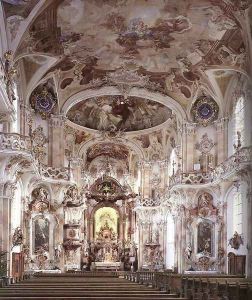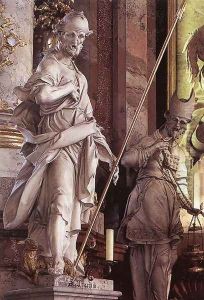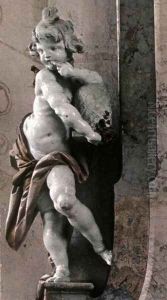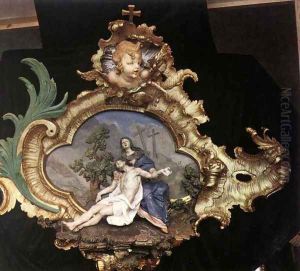Joseph Anton Feuchtmayr Paintings
Joseph Anton Feuchtmayr was a pivotal figure in the development of the Rococo stucco work in Southern Germany, born in 1696 in Wessobrunn, Bavaria, a region renowned for its stucco masters and artists. Coming from the illustrious Feuchtmayr family, which was deeply involved in the craft, he was part of the so-called Wessobrunner School, a group of artists and craftsmen known for their exceptional skills in stucco work, contributing significantly to the spread of Rococo style in Central Europe. His family background provided him with a fertile ground for honing his craft from a young age, setting the stage for his later achievements.
Joseph Anton's work is characterized by its intricate detail, dynamic forms, and the lightness typical of the Rococo style, which was a reaction against the grandeur and strict regulations of the Baroque. He was instrumental in decorating some of the most prestigious buildings of his time, including the pilgrimage church of Wies (Wieskirche), which is considered a masterpiece of Bavarian Rococo architecture. His contribution to the Wieskirche and other ecclesiastical buildings not only showcases his mastery of stucco techniques but also his ability to blend architecture, sculpture, and painting into a cohesive and visually stunning whole.
Throughout his career, Feuchtmayr worked extensively in southern Germany and Austria, leaving behind a legacy of Rococo art that continues to be admired for its elegance, lightness, and expressive detail. His work influenced many contemporaries and later generations of stucco artists, cementing his place as a key figure in the development of the Rococo style in the German-speaking world. Joseph Anton Feuchtmayr died in 1770, but his work remains a testament to the creativity and skill of Rococo artistry, celebrated for its contribution to the aesthetic and cultural landscape of 18th-century Europe.



